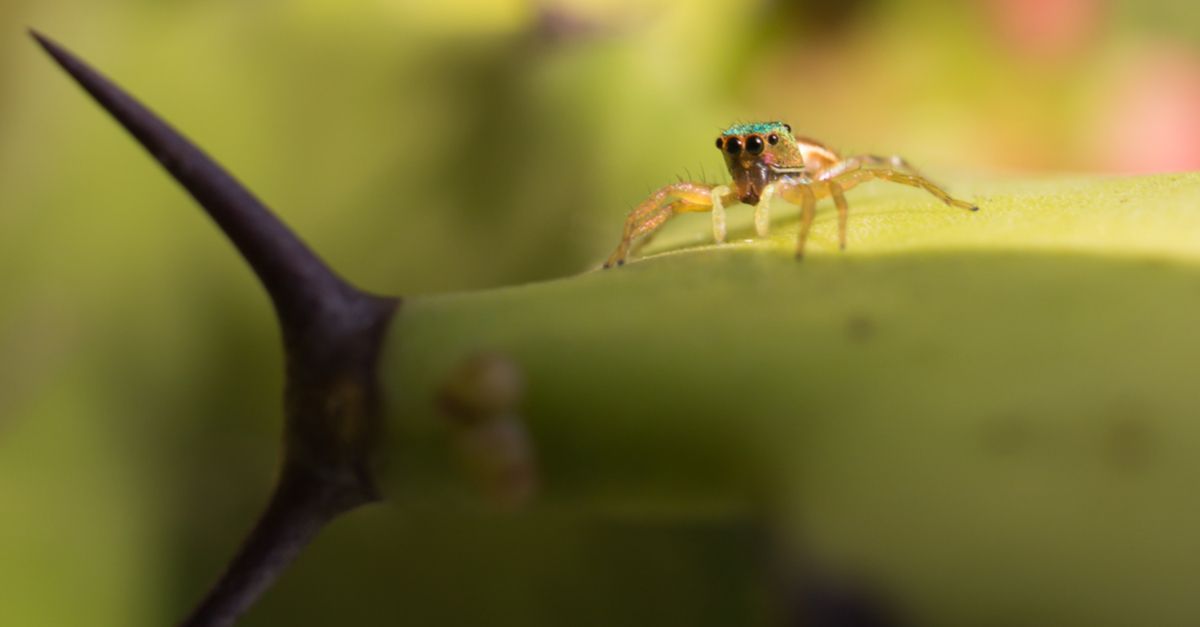Variations:
- The plant is a cactus or a yucca, and it begins to shake, whine, or hum.
- In rare versions, scorpions are said to come spewing out of the plant.
- Sometimes the authorities manage to contain the damage, either by destroying the cactus before it explodes, or by dragging it out of the house before it lets loose. In other versions the plant owner escapes her home just in the nick of time; as she clears the front door, the cactus goes kaboom. Occasionally, the cactus lets loose its horde of creepies in the dead of night. In one particularly chilling version, newlyweds awaken to find thousands of baby tarantulas crawling on their faces. Though they survive the incident, the wife has to have her lips amputated because of the number of bites on her mouth and can never kiss again.
- Who gets called varies as well: a friend, 911, a local plant nursery, a department store, plant experts at a nearby horticultural marvel, the Department of Agriculture, a "horticulture hotline" — all are said to have been consulted, and all advise the caller to get out of the house immediately.
- This legend has been everywhere — Germany, Scandinavia, Australia, Great Britain, Canada, and the United States.
Legends about spiders nesting in cactuses or yuccas imported from Central America surfaced in Scandinavia and Great Britain in the early 1970s.
In 1985, an outbreak of "Spider in the Yucca" lore featured a plant supposedly bought from Marks & Spencer, a leading British department store.
Though at times this story has slipped past the watchdogs of the mainstream media and been reported as a news story, it's never been true. There has never been a spider-spewing exploding cactus, and there never will be. You see, the tale is impossible.
According to Dr. Clifford S. Crawford, professor of biology at the University of New Mexico, a tarantula might possibly lay eggs or build webs on, but not in, a cactus. Curators at the Desert Museum in Tucson, Arizona, point out that tarantulas live in burrows in the ground, especially the female, which rarely moves around on the surface. No tarantulas or spiders of any type ever have been known to burrow into plants, says Rod Crawford, curator of arachnids at the Burke Museum. Even if a small spider happened to climb into a hole in a cactus and lay eggs there, he says, the plant wouldn't explode when the eggs hatched. Tarantulas take several years to reach full size.
Okay, so what about scorpions?
Unlike the tarantula, a scorpion and her young might seek shelter within a cactus. It is therefore theoretically possible to find a scorpion lurking in a succulent. However, hatching scorpions aren't going to come flying out of a houseplant. A scorpion's pregnancy lasts up to a year and a half. Offspring are born live and then crawl onto their mother's back for another two to six weeks of external development. The little horrors take up to seven years to mature and can live to an age of 25. At no point in their growth is there a sudden spurt that would cause a cactus to erupt.
Although there haven't been any spider-filled cactuses, venomous eight-leggers have been found lurking in bunches of bananas and clusters of grapes which made their way to American consumers. Spiders can — and do — show up in shipments of fruit. Oftentimes those fruits are American-grown.
Freeloading scorpions are a much rarer find, but they have been known to turn up. In 1993, a British supermarket worker was stung by one which had been napping in a bunch of bananas. In 1989, a British housewife discovered a similar hitchhiker when she began unwrapping her purchases at home. She escaped unscathed.
It's a pretty clear-cut message: Leave 'foreign' things where you find them; don't bring them home. The same theme runs through The Mexican Pet legend — the cute little doggie adopted abroad turns out to be vicious sewer rat.
As a final note, I leave you with this charming variant of the legend, as published in 1992 by FOAFtale News, the newsletter for the the International Society for Contemporary Legend Research:
A lady buys STACKER software for her home computer, a program that compresses data on her hard disk at a ratio of 1:1.8, giving her more usable storage space. One day she finds her computer buzzing and vibrating, even though it was turned off. A computer service man warns her to leave the house at once, but before she can do so, the monitor glows green and explodes, scattering tarantulas all over the house.
"What happened is this," the version continues. The STACKER program was shipped from Carlsbad, CA, where these deadly arachnids are in indegenous creature. A breeding pair had inadvertently been shipped in the box with the software. When [the lady] installed STACKER on her hard disk she also unknowingly installed this pair of deadly tarantulas. Being on the same disk as STACKER, these deadly creatures were also compressed 1.8:1. That meant that by the time the full-size AT cabinet was full, there were literally millions of them. When the case ruptured, the spiders were immediately decompressed and back to the normal size . . ."
"By the way, my lady friend only needed four pallbearers. It seems that the spider bites had compressed her 1.8 to 1."


